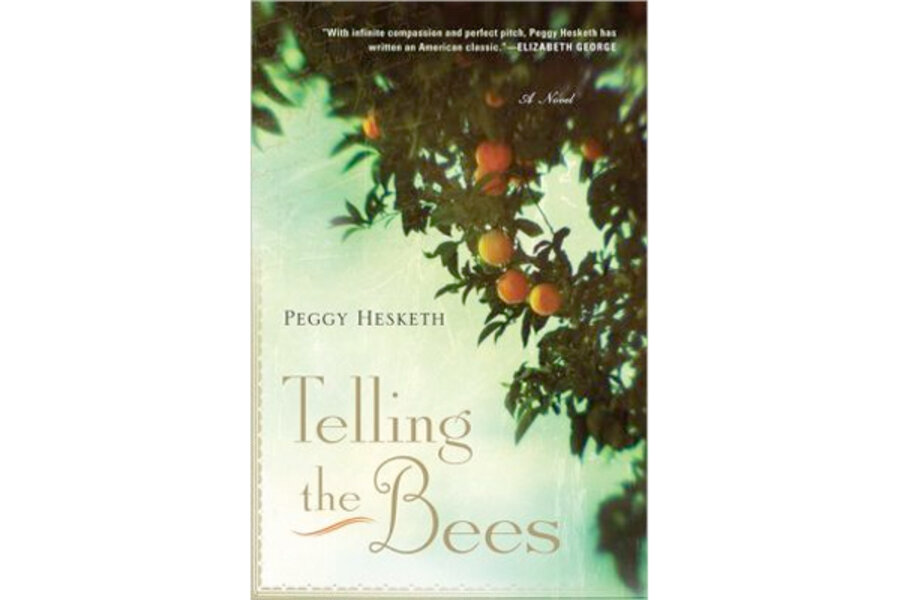Telling the Bees
Loading...
A gentle octogenarian reflects on the ways he failed his dearest friend in Peggy Hesketh’s elegantly crafted debut mystery, Telling the Bees.
Beekeeper Albert Honig was finishing breakfast when he heard the bees along the utility wires. Following the agitated noise to his estranged neighbors’ house, he found the Bee Ladies, Claire and Hilda Straussman, bound and dead on the floor and bees swarming down their chimney.
Once the closest person to Albert on earth, he and Claire hadn’t spoken in the 10 years before her death.
“Telling the Bees” is an elegiac, contemplative mystery that has sparked comparisons with literary heavyweights such as Kazuo Ishiguro’s Man Booker Prize-winner “The Remains of the Day” and Marilynne Robinson’s Pulitzer Prize-winning “Gilead.”
If anything, Albert has even less awareness of his fellow beings than the repressed butler in “Remains of the Day," so consumed is he with his books and his bees.
“Though I have lived my entire life within five miles of the Pacific Ocean, as the crow flies, I have yet to see it firsthand,” Albert says in one of the most melancholy sentences of the book. “Looking back now, I think I might have enjoyed the view.”
“Telling the Bees” is more than nominally a mystery, but Hesketh is also conducting an exploration into a now-vanished southern California world of almond, citrus, and walnut groves, where people knew their neighbors, but politeness meant not disturbing the surface to see the horror underneath.
After the murders, Albert finds himself haunted by a quote from Henry Wadsworth Longfellow: “‘The cruelest lies are often told in silence.’... And kept in darkness, I should like to add.”
The investigation is headed up by the highly competent, sardonic Detective Grayson, who musters a startling amount of patience in the face of Albert’s arcane facts about apiaries. More than dithering, Albert uses his tangents to conceal facts about the Straussmans in an effort to protect the reputation of the dead.
Not having a double murder to solve, this reader couldn’t get enough of the mixture of folklore and science. The title comes from the folk custom of “telling the bees” when their keeper has died. In a sign of how out of joint the time has become, no one tells the Bee Ladies’ hives that their mistress is gone.
“Bees do not thrive in a quarrelsome family. They dislike bad language. And they should never, ever be bought or sold for money,” Alfred’s dad tells him.
The murders carry Albert back past their last fight to his childhood, when the Straussman girls – doughy, silent Hilda and quicksilver-like Claire – moved in next door to Albert with their hag of a mother and mostly unseen father.
Claire caught bee fever the day Albert’s dad had the girl put her hand into a swarm. (That, Albert explains, is when bees are at their most docile and least inclined to sting.) Enchanted by the warm, soft, accepting presence of the furry bodies, Claire is hooked.
By their teens, Albert is almost wordlessly in love with his friend, who dreams of far-off places.
“Honestly, Claire, I see no need to look beyond my own backyard to find whatever my heart desires,” is the closest he can come to telling her.
Claire, meanwhile, knows that his unbending honesty means she can’t confide in him.
“I trust your heart, Albert. It’s that darn head of yours,” she tells him.
Albert always believed the estrangement with Claire would be a temporary one, and the method of its finality consumes him with guilt.
“I do believe now that I may have been the only one who might have lifted the shroud of pain that cloaked the dark interior of the Straussman house while anyone worth caring about still lived within, but for any number of reasons, I did not,” he says. “In my own defense, I can only say that Saint Thomas Aquinas once wrote that there are three things necessary for the salvation of man: to know what he ought to believe, to know what he ought to desire, and to know what he ought to do.... When I take into account my lifelong connection to the Straussman family I find my personal salvation wanting on all three counts.”
While readers are likely to find themselves longing for a plate of buttered toast and honey, there's nothing "cozy" about “Telling the Bees” – it’s downright gorgeous.
Yvonne Zipp is the Monitor fiction critic.








